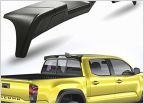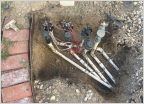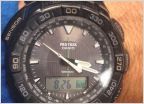-
Welcome to Tacoma World!
You are currently viewing as a guest! To get full-access, you need to register for a FREE account.
As a registered member, you’ll be able to:- Participate in all Tacoma discussion topics
- Communicate privately with other Tacoma owners from around the world
- Post your own photos in our Members Gallery
- Access all special features of the site
Where to Start with Real World Animation (on a Budget)
Discussion in 'Off-Topic Discussion' started by rocknbil, Nov 3, 2023.
Page 2 of 2
Page 2 of 2


 Stupid mods/acessories
Stupid mods/acessories Recommendations for a portable air compressor
Recommendations for a portable air compressor What's your favorite wallet?
What's your favorite wallet? Any product recommendations for a new pup?
Any product recommendations for a new pup? Sprinkler valve & manifold redo - Suggestions needed
Sprinkler valve & manifold redo - Suggestions needed Recommend me a tactical watch
Recommend me a tactical watch


































































